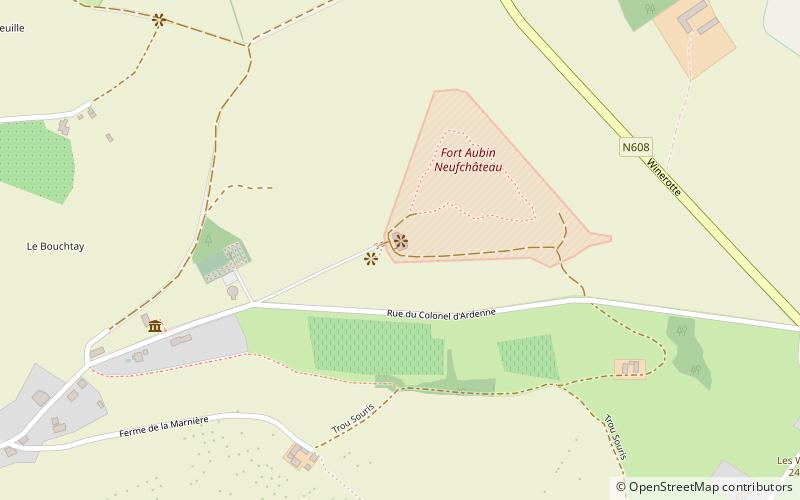Fort d'Aubin-Neufchâteau


Facts and practical information
Nestled in the serene Belgian countryside, Fort d'Aubin-Neufchâteau stands as a poignant reminder of the nation's wartime resilience. This historical fortification, now transformed into a museum, offers visitors a glimpse into Belgium's defensive strategies during World War II.
Constructed in the 1930s as part of the Belgian Fortification Plan intended to protect the eastern borders, Fort d'Aubin-Neufchâteau was one of twelve forts designed to shield the Liège region. This fortress, with its robust concrete structure and underground tunnels, was engineered to withstand enemy assaults and played a crucial role during the Battle of Belgium in May 1940.
Despite the fort's valiant resistance, it eventually fell to German forces, but not before significantly delaying their advance. Today, the site serves as a testament to the bravery of the soldiers who defended it. Visitors can explore the fort's preserved installations, including barracks, gun turrets, and command posts, which offer an authentic look at the living and fighting conditions of the time.
The museum within Fort d'Aubin-Neufchâteau provides educational exhibits detailing the fort's construction, its strategic significance, and the heroism of its defenders. Through guided tours and interactive displays, the museum seeks to honor the memory of those who served and educate the public about this pivotal chapter in Belgian history.
Fort d'Aubin-Neufchâteau – popular in the area (distance from the attraction)
Nearby attractions include: Fort Eben-Emael, Henri-Chapelle American Cemetery and Memorial, Val-Dieu Abbey, Fort de Battice.











